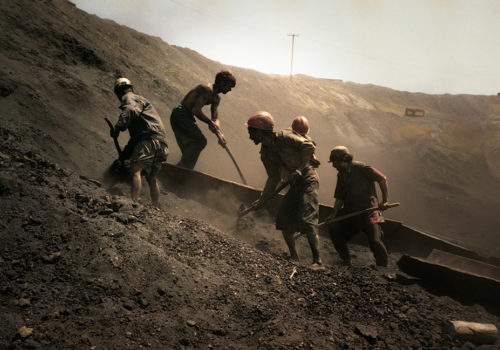For nearly three decades, Afghanistan has experienced only one succession of conflicts: the Soviet occupation, the Afghan civil war, the rise and fall of the Taliban and today their return. These events ruined the economic development of Afghanistan and eroded the vitality of its population. Coal, an abundant resource found in several provinces of the country, can be an essential fuel used for the production of electricity, a basic need in the Central Asian nation.
During the Soviet occupation starting in 1979, Russians sent their own engineers to run a large-scale production of the black gold, which they exported for their own profit. In recent years, I visited a particular mine called Kar-Kar, difficult of access due to its geographical location, at 12 kilometers northeast from Pol-e-Khomli, in central Afghanistan. Until the departure of the Russians in 1989, the production at the mine employed more than 2000 workers who extracted a variety of quality coal, considered one of the best in the country. The 150 miners employed today hardly cover the vast site of hundreds of galleries previously dug three decades ago.
Often working at a depth of more than 360 meters deep, the miners extract the mineral with only shovels and pickaxes in hand, battery powered lamps on top of their heads, and old equipment once imported from Czechoslovakia. Intense heat, total darkness and the risk of explosion from methane gas make coalmining very difficult and dangerous.
The local demand for coal is far from profitable. Still lacking of major infrastructures such as reliable transportation and security, the Afghan government is unable to exploit the fossil fuel. As the present war against the Taliban wages on, the country seems to be losing grip on its most wanted resource.
















